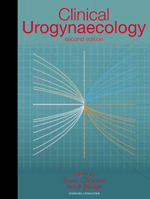Part One: Basic Science . Anatomy. Neurophysiology. Mechanism of
incontinence. Theory of pharmacology. Epidemiology of
micturition disorders. Part Two: Investigation . Physical
aspects of urodynamic investigation. History and examination.
General urologic investigation. Cystometry and
videocystourethrography. Radiology and MRI. Uroflowmetry.
Urethral function tests. Cystourethroscopy. Ultrasound. Clinical
neurophysiology. Ambulatory urodynamic monitoring. Special
investigations. Part Three: Clinical Conditions . Classification
of urogynaecological disorders. Urethral sphincter incompetence.
Detrusor instability. Neuropathic bladder. Bladder after radical
pelvic surgery. Genitourinary fistulae. Voiding difficulties and
retention. Urinary tract and benign and malignant disease.
Congenital abnormalities. Urinary frequency and urgency. Bladder
hypersensitivity. Urinary tract infection. Urethral lesions.
Pelvic organ prolapse. Urogenital tract dysfunction and the
menopause. The elderly. Urogynaecology in the third world.
Psychological aspects of micturition disorders. Nocturnal
enuresis. Sexual problems. Lower intestinal tract disease.
Clinical neuropathology of the urethra. Part Four: Urinary Tract
In Pregnancy . Upper urinary tract in pregnancy. Lower urinary
tract in pregnancy. Part Five: Treatment . Applied pharmacology.
Electrical therapy. Bladder drainage. Diversion and undiversion.
Role of laparoscopy in urogynaecology. Bladder retraining. Pads.
Pants and mechanical devices. Physiotherapy. Part Six: Into
Practice . Organisation of community continence services.
Training. Urogynaecology audit. Appendix: ICS Standardisation
Reports.


